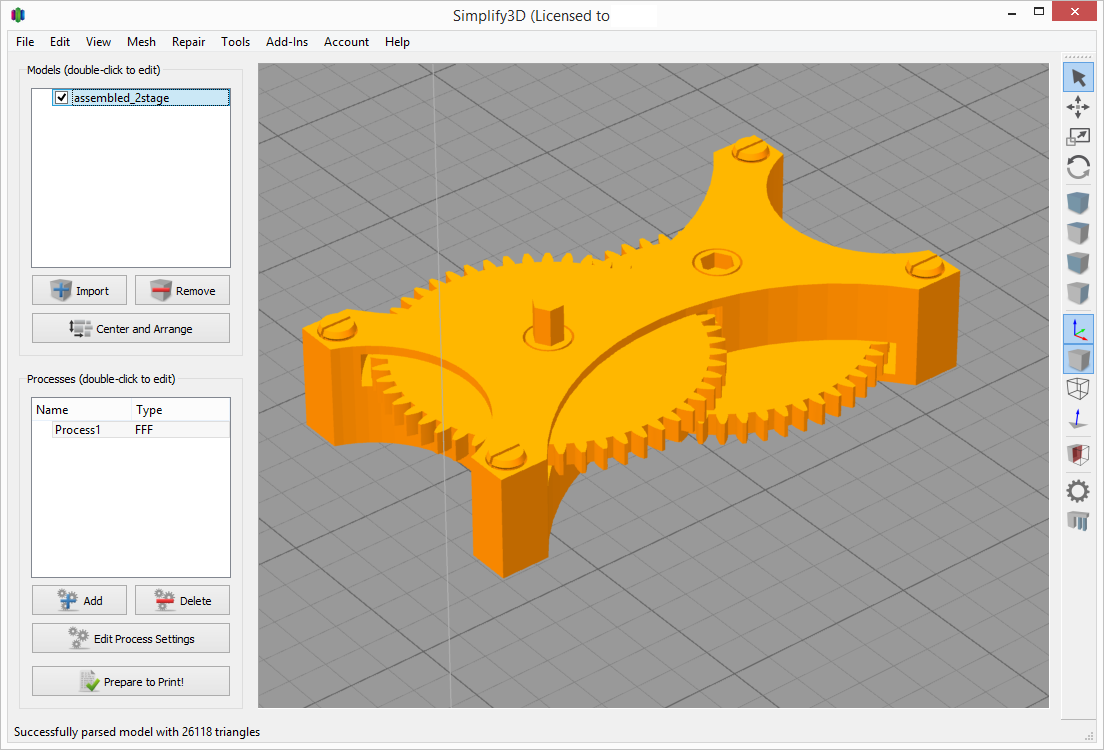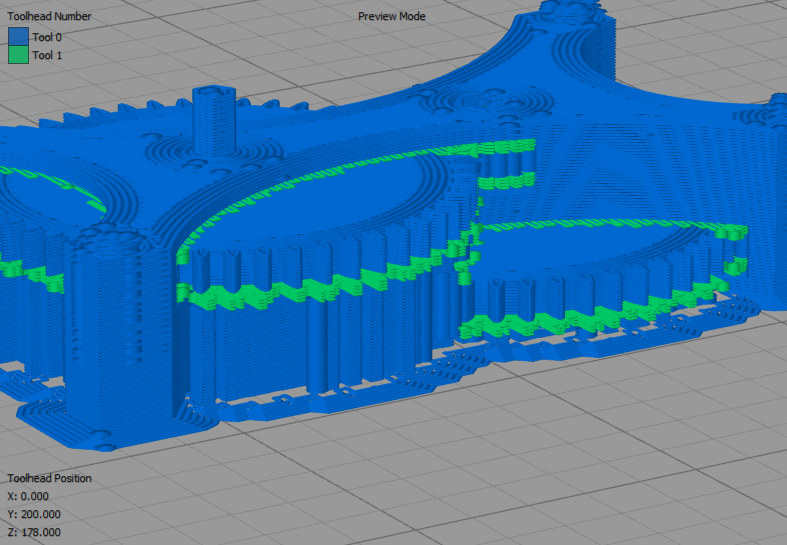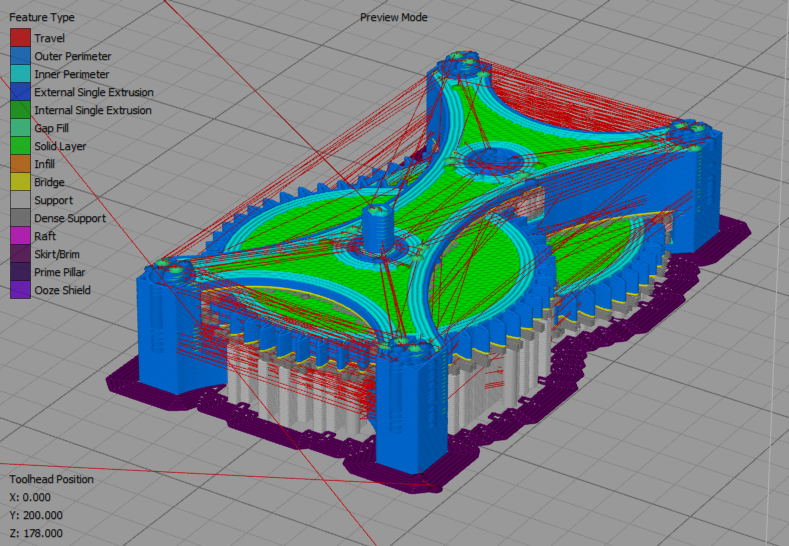Simplify3D 4.0 Review: New Slicer Version

In July 2017, the developer of the slicer Simplify 3D introduced a new software version - 4.0. According to a brief announcement, a number of new functions have been added, we will tell about them in detail, but first - information for those who do not use Simplify3D.
What is it?

This slicer is commercial software with more than 350 printers on the compatibility list. If the printer is not in the list, but is running a common firmware, Simplify3D can be configured for it. Due to the developed system of profiles, simultaneous work with various printers is possible. Fully supported printing with two extruders. Additional features include manual correction of supports, visual simulation of the printing process and printer control directly from Simplify3D.
You can find a detailed overview of the Simplify3D features here , and now we’ll focus on what's new in version 4.0.
Improved extrusion width calculation
Now - to the fact that the new Simplify3D 4.0. Let's start with the extrusion width. Improved algorithm for working with thin walls. First, it is now possible to form a wall with a thickness of one perimeter. Secondly, the automatic change of the extrusion width allows to work correctly with thin vertical or inclined elements with varying thickness. Thirdly, in the absence of filling in a thin-walled object, the extrusion width for the inner perimeters is selected in such a way that cracks do not occur.
Modified Support

In terms of creating supports - two good news. The first is that now solid “pyataks” have been implemented with supports that begin on the table. Useful for small supports, the spot of contact with the table is small, before they often break off during printing. The second is for those who print with water-soluble supports, PLA + PVA. Instead of forming supporting structures entirely of PVA, we print them with the basic material, and soluble - only the layers that are in direct contact with the model. The result is a savings in both PVA and extruder switching time.
Printing in multiple processes
The process, in Simplify3D terminology, is a set of slicing settings. The thickness of the layer, the number of perimeters, filling, speed, and so on. In the simplest case, for one task - one process. A new idea is that several processes are assigned to the same task. This allows you to set individual settings for printing different parts of the model and even individual layers. For example, we first print with a layer of 0.2 mm, with a filling of 10% and at a speed of 100 mm / s, and then, for high-quality transfer of fine details, go to a layer of 0.1 mm, with a filling of 50% and at a speed of 40 mm / s. The transition between processes is carried out neatly, without unnecessary continuous layers and defects on the outer surfaces.
Other interesting things
Changes the direction of the lines of continuous filling of the upper layers. Hanging perimeters are now treated as perimeters or bridges. The algorithm for simplifying and “repairing” overly detailed and incorrect models has been improved. Expanded settings for sequential printing mode - now you can use more than one process for each part, as described above.
Generally

Changes in Simplify3D touched upon both tools for advanced users and algorithms for automatic calculation of print parameters. There are improvements that are not directly related to the preparation of the model for printing - in particular, new settings for the simulation display have been added.
Whether to buy Simplifay, cons and pros
Minuses:
- Simplify3D differs from competitors in high cost, $ 175.
- There are certain things that are made more conveniently in other slicers, for example, the profile system in KISSlicer, the simplicity of Cura for novice users, or the abundance of manual settings in Slic3r.
- The need to create a printer profile if it is not in the list of supported models.
Pros:
- Excellent work with supports, both soluble and from the base material. If the result of the automatic placement of supporting structures does not suit you, manual correction is possible.
- Flexibility of manual settings: now you can not only change the temperature and intensity of the blower at the selected height, but also change the whole process, including the layer thickness, filling and other parameters.
- High speed slicing.
- Full-featured printer management interface.
- Built-in function of splitting a model into its component parts, simplifying and “repairing” models.
- Interactive preview (simulation) of the printing process.
- The function of adding a picture to a loaded model.
- The full exploration of Simplify3D features will allow not to access other slicers, but to use the same program for all the slicing tasks.
- Slicer updates are free, users of version 3.1.1 released last year switched to 4.0 at no additional cost. The latest software version is always available, regardless of the date of purchase.
- The opportunity to receive a 50% discount when you buy a license with a 3D printer in Top 3D Shop.
Whether to buy Simplifay 3D - depends on what the slicer will be used for.
If this is a rare hobby print of souvenirs and household products, and the user has free time and a desire to work in several different programs, updating each of them as needed - you can get by with analogs, put several free programs that complement each other’s functions and compatibility, and fine dispense with them.
If speed and uninterrupted operation is important, then you need one program with a good set of functions and stable updates, in this case Simplify3D is preferable.
The cost of the Simplify3D license in Top 3D Sho p is $ 175. You will receive a 50% discount on this software when you purchase any FDM / FFF printer costing from 80,000 rubles.

* Discount for software is provided when purchasing a 3D printer with a price of 80,000 rubles or more.
Want more interesting news from the world of 3D technology?
Subscribe to us in the social. networks:




All Articles